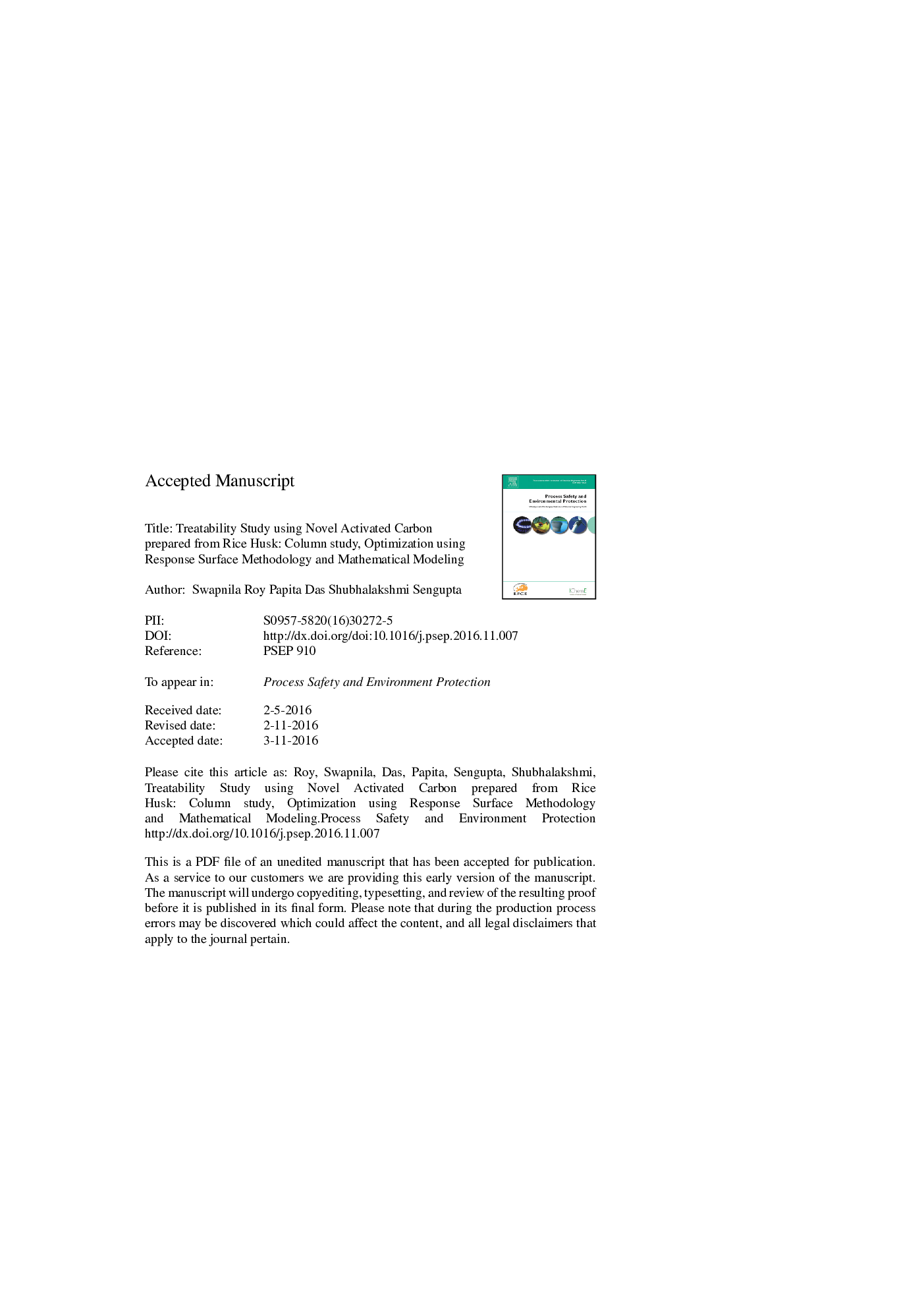| Article ID | Journal | Published Year | Pages | File Type |
|---|---|---|---|---|
| 4981036 | Process Safety and Environmental Protection | 2017 | 38 Pages |
Abstract
In this present study, activated carbon was synthesized from rice husk and was used for the removal of fluoride present in water. The adsorption of fluoride from aqueous solution by activated carbon (ACRH) was investigated in a laboratory-scale fixed-bed column. A two-level three factor (23) full factorial central composite design with the help of Design Expert Version 7.1.6 (Stat Ease, USA) was used for optimization of the fluoride removal process and evaluation of interaction effects of different operating parameters: initial fluoride concentration (20-50 mg Lâ1), flow rate (5-10 mL minâ1) and bed height (3-7 cm) were studied. The higher correlation coefficient (R2) value of 0.9893 and low p value (<0.0001) indicating the fitness of the response surface quadratic model developed by the Design expert optimization process. Numerical optimization was used to identify the optimum conditions for achieving the targeted breakthrough time of 17.26 h. The optimum conditions were found to be initial fluoride concentration of 50 mg Lâ1, flow rate of 10 mL minâ1and bed height of 3 cm. A confirmatory experiment was conducted to evaluate the accuracy of the optimized procedure. The Thomas model showed excellent fit to the dynamic fluoride adsorption data obtained from the experimental results. Therefore, it can be concluded that the current investigation provided valuable insights for designing and establishing a continuous waste water treatment process.
Related Topics
Physical Sciences and Engineering
Chemical Engineering
Chemical Health and Safety
Authors
Swapnila Roy, Papita Das, Shubhalakshmi Sengupta,
